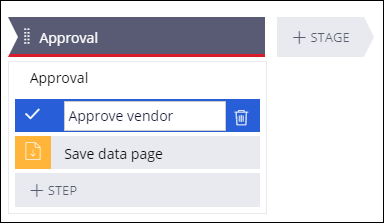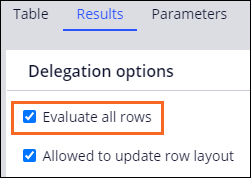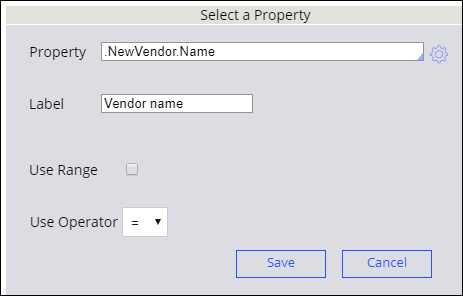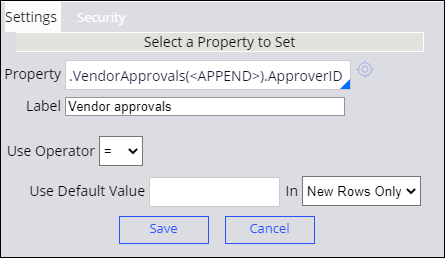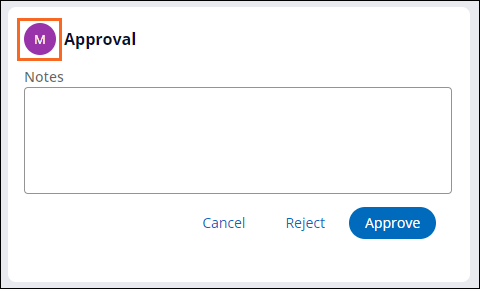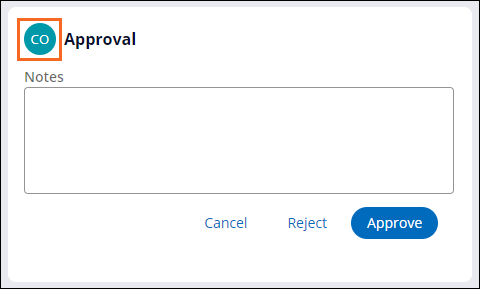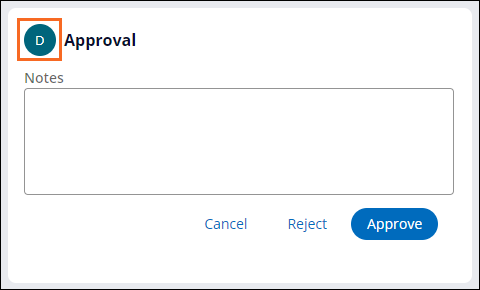
Configuring cascading approvals with an authority matrix
Archived
3 Tasks
10 mins
Scenario
As the repair service grows, GoGoRoad stakeholders want to allow Territory Managers to submit new vendors as service providers for approval. If the vendor is The Automobile Association (TAA), which has an existing relationship with GoGoRoad, the New Vendor case is routed to the Manager of the Territory Manager for approval. The case is then routed to a Compliance Officer, who ensures the request adheres to the agreement between TAA and GoGoRoad. If the vendor is not TAA, the New Vendor case is routed to the Manager, and then the Director for approval. Create a decision table to ensure the approval is routed appropriately. Add an Approval step to the New Vendor case type to support the described behavior.
The following table provides the credentials you need to complete the challenge.
| Role | User name | Password |
|---|---|---|
| Application Developer | author@gogoroad | pega123! |
Note: Your practice environment may support the completion of multiple challenges. As a result, the configuration shown in the challenge walkthrough may not match your environment exactly.
Challenge Walkthrough
Detailed Tasks
1 Create the authority matrix data structure
- In the Dev Studio navigation pane, click Data types.
- In the Data types pane, click Options, and then Add data type.
- In the Add data type window, in the Label field, enter Vendor approvals.
- In the Description field, keep the default value as Vendor approvals, and then click Submit.
- In the Vendor approvals data type, click Add field.
- In the Field name field, enter Approver ID.
- In the Type list, keep the default value as Text (single line), and then click Submit.
- Click Save to save the Vendor approvals data type.
- In the navigation pane, click Case types > New vendor to open the New vendor case type.
- Click the Data model tab, and then click Add field.
- In the Field name field, enter Vendor approvals.
- In the Type list, select Embedded data.
- In the Data object list, select Vendor approvals.
- In the Options field, select List of records.
- Click Submit to create the Vendor approvals data relationship.
- Click Save to save the changes to the New vendor case type data model.
2 Configure the Approve vendor step
- In the New vendor case type, click the Workflow tab.
- In the Approval process, click Step > Approve/Reject.
- Name the step Approve vendor.
- Click and drag the Approve vendor step to precede the Save data page step.
- With the Approve vendor step selected, on the General tab of the properties pane, in the Approval flow type list, select Cascading.
- In the Approval based on list, select Authority matrix.
- In the Page list property field, enter or select .VendorApprovals as the page list property to hold the list of approvers.
- In the Approver property field, enter or select .ApproverID as an element of the page list to identify each approver in the list.
- In the Decision table for matrix field, enter VendorApprovals as the decision table that determines the conditions for populating the page list.
- To the right of the Decision table for matrix field, click the Open icon to open and configure the decision table.
3 Configure the VendorApprovals decision table
- On the Create Decision Table form, click Create and open.
- Click the Results tab.
- In the Delegation options section, select the Evaluate all rows check box.
- Click the Table tab.
- In the Conditions column, click the first cell heading to display the Select a Property dialog box.
- In the Property field, enter or select .NewVendor.Name to specify the condition property.
- In the Label field, enter Vendor name.
- Keep the default operator as =.
- Click Save to finish configuring the condition.
- Under Actions, click the cell heading to specify the condition property as .VendorApprovals(<APPEND>).ApproverID.
- Keep the default operator as =.
- Click Save to finish configuring the condition.
- Click an empty cell in the table, and then click the Insert Row after icon to insert two additional rows.
- Click each cell in the decision table, and then enter the following values:
- Click Save to save the decision table.
- Return to the New vendor case type, and then click Save to save the changes to the workflow.
Confirm your work
- On the New vendor case type, click Save and run to create a case instance.
- In the Collect vendor information step, in the Name field, enter TAA.
- Click Submit.
- In the To do section of the case, to the right of Get Approval, click Go to display the first approval.
- In the Approval view, hover over the user icon to verify that the open assignment is assigned to the Manager.
- Click Approve.
- In the To do section of the case, to the right of Get Approval, click Go to display the second approval.
- In the Approval view, verify that the open assignment is assigned to the Compliance Officer.
- Create a New vendor case instance.
- In the Collect vendor information step, in the Name field, enter Pega Towing.
- Click Submit.
- In the To do section of the case, to the right of Get Approval, click Go to display the first approval.
- In the Approval view, verify that the open assignment is assigned to the Manager.
- Click Approve.
- In the To do section of the case, to the right of Get Approval, click Go to display the second approval.
- In the Approval view, verify that the open assignment is assigned to the Director.



